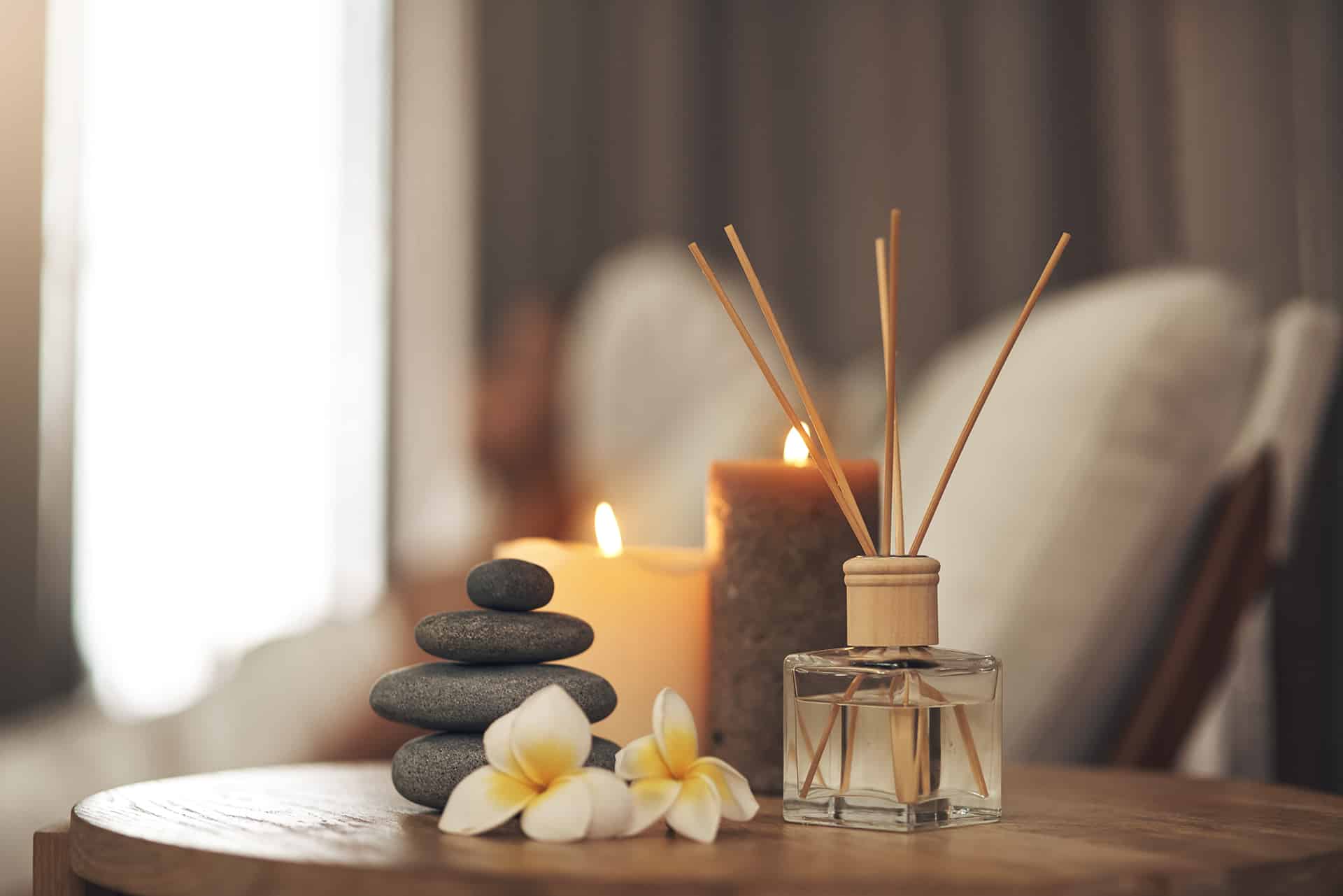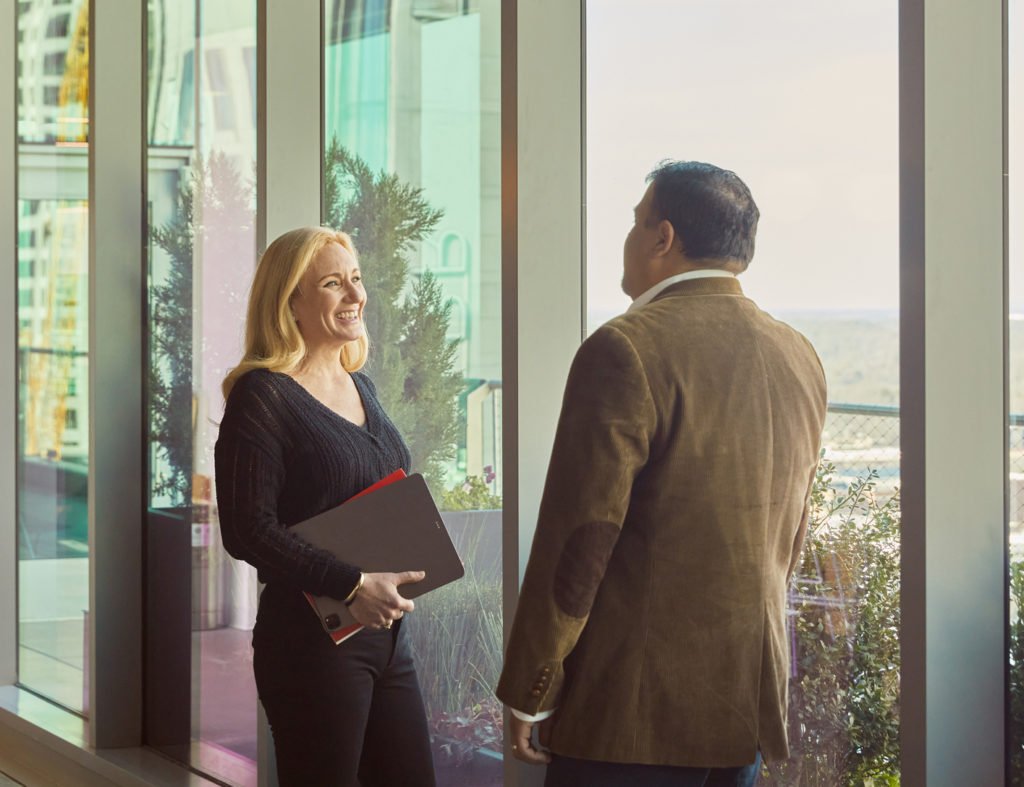While wellness permeates our everyday lives, it does not necessarily help our state of mind. On top of everything else we juggle, scientists have learned that people also battle eco-anxiety—feeling the weight of climate change concerns and the sense of urgency to activate change.
Having one less thing to worry about is a common goal for us and clients alike. Our routine behaviors, schedules and purchases take a toll on the environment. Even the buildings we design, live, shop and work in increase our carbon footprint. So, we look toward salutogenic design practices to help relieve eco-anxiety.

Salutogenic means the origins of health. A salutogenic design approach intends to help people respond positively to their surroundings both physically and mentally. Activity, biophilic design, restoration and mindfulness of our circadian rhythm all help to improve our health.
Retailers incorporate salutogenic principles in their stores to increase dwell time and increase sales. Corporate spaces that apply salutogenic principles show care for their employees and improve productivity. In the classroom, certain salutogenic ideas can increase alertness in students, and personal salutogenic practices can improve overall well-being.
Ways to Incorporate Salutogenic Principles in Design
Consider using the latest paints by Teknos, Biora Air in your designs. These paints enhance and purify air quality by absorbing aldehyde pollutants in interior spaces and neutralizing harmful elements.
Biowaste eggshell-based tiles by CArrele are another excellent product choice. The tiles consist of eggshells from waste material blended with a binding agent to make them durable.
Zero carbon furnishings, such as those produced by Takt, plan to have net zero emissions by 2025. Foster + Partners worked with Benchmark to create carbon-negative wood chairs called OVO. Further furnish your design with SMILE’s shelf created from re-purposed chopsticks.

Look for mycelium in your product selections. Mushrooms are diverse and regenerative, and manufacturers use them in everything from footwear to leather bags to helmets.
Need to insulate a room? Engineers have studied how squids change color and developed a mimicking material with adjustable insulating properties. This metalized polymer film can be used for everything from coffee cups to cars. Better yet, the material can be produced in large batches and recycled through conventional recycling systems.
Ready for a Personal Retreat?
Try going on a Scientific Stay vacation for a once-in-a-lifetime experience. Instead of lounging away the week, vacationers participate in activities that combine education and wonder while enjoying a luxury hotel stay. Hotels collaborate with scientists, experts in wellness or a sustainability guide to pique guests’ curiosity. In turn, guests learn more about the earth and how to make positive environmental changes in their everyday lives.
Four Seasons has a massive aquarium, Hyatt Hotels offer more than 40 explore-cations, and the Kimpton Vero Beach Hotel offers Stargazing on the Sea. Or, what about a peaceful Light-Based walking experience with illuminated tree lights? The Morton Arboretum Illumination: Tree Lights will re-open its spectacular 50-acre exhibit for its tenth season this winter. In the summer months visit Morton Arboretum’s 1,700-acre living museum with tall sculptures that mimic wood by Daniel Popper.

Consider camping or living in a Regenerative Bio-ceramic Dome, designed to connect campers with nature with minimal disruption to the environment. The domes use regenerative building methods including structural bio-ceramics that mimic the chemical bonds found in bones and seashells.
Visit a botanical art restaurant for a relaxing meal with family and friends. Remember to wear nature-inspired fabrics and biomimicry-inspired textiles. Fabrics by Roya Aghighi have photosynthesis properties, seawater plant fabrics by SaltyCo are sustainable, and Werewool creates nature-inspired biodegradable fibers for another regenerative solution. For the finishing touch, try creating your own custom scent by visiting an interactive aroma kiosk.
If you need to stay out of the sun, play a mindful virtual reality game by Maloka. The game allows you to grow your own island through meditative practices and gameplay. Similarly, EE’s 5GAR-enabled nature event “Green Planet AR Experience” leads you on an immersive journey through breathtaking environments with Sir David Attenborough as your host. Wouldn’t this be a welcome addition to a retail environment or for staff to take a mental break?
In Summary
By actively introducing these ideas into our retail and commercial projects, we can reduce eco-anxiety with our clients, their customers and our teammates. With so many scientifically supported regenerative products available, we can rest assured that salutogenic design opportunities are all around us. Try one of these recommendations yourself and watch your ideas grow.
For now, it’s time for me to relax with my “Arckit Greenscape Village” building kit and design a green, self-sustainable community with my granddaughter to engage the rising generation.
Credits: TrendHunter Salutogenic Design Trend Report for Little 04.19.22. Advisor Mary Van Puymbroeck

